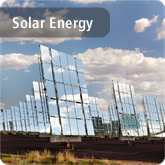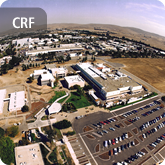 Sandia’s Sunshine to Petrol (S2P) team seeks to address the critical national and global issues of growing energy consumption amid increased vulnerability and price volatility of petroleum supplies and climate change risks. The transportation and industrial sectors in the United States are deeply dependent on petroleum, a dominant energy source for these sectors and a driver of greenhouse gas emissions. An alternative energy carrier coupled to a sustainable energy source that can be used within existing infrastructure, distribution, and traditional petroleum-based combustion systems is necessary to assure national security, enhance U.S. economic competitiveness, demonstrate leadership in mitigating the risks of climate change, and promote a smooth transition to an energy-secure and diversified transportation mix.
Sandia’s Sunshine to Petrol (S2P) team seeks to address the critical national and global issues of growing energy consumption amid increased vulnerability and price volatility of petroleum supplies and climate change risks. The transportation and industrial sectors in the United States are deeply dependent on petroleum, a dominant energy source for these sectors and a driver of greenhouse gas emissions. An alternative energy carrier coupled to a sustainable energy source that can be used within existing infrastructure, distribution, and traditional petroleum-based combustion systems is necessary to assure national security, enhance U.S. economic competitiveness, demonstrate leadership in mitigating the risks of climate change, and promote a smooth transition to an energy-secure and diversified transportation mix.
The Sandia S2P team seeks to address this challenge by developing a sustainable liquid fuels solution that can replace petroleum-based fuels on a large enough scale to significantly and positively affect the energy future of the United States and the world. The solution, S2P, is based on a novel continuous flow, recuperating thermochemical heat engine powered by concentrated solar irradiation. The engine converts either carbon dioxide or water to two products, oxygen and carbon monoxide or hydrogen, respectively, and spatially separates the products. Carbon monoxide and hydrogen are universal energy-rich building blocks for producing synthetic fuels that can be equivalent to today’s petroleum-derived liquid fuels, the “gold standard” transportation energy carrier.
To realize this concept, Sandia’s S2P team is addressing and solving complex chemical, materials science, and engineering problems for the prototype thermochemical heat engines and crucial enabling metal-oxide working materials. They must also demonstrate techno-economics of a full system (sunlight to liquid hydrocarbon fuels) are viable in a competitive market place. The team has proven the concept in the laboratory in batch mode, virtually using detailed reactor models, and in continuous mode on-sun in the lab’s hand-built precision prototype reactor currently undergoing tests at the solar furnace at the National Solar Thermal Test Facility . The team has made skillful use of analytical modeling to complement experiments and has demonstrated the potential for a foundational solution to the ‘triumvirate challenge’ of energy security, economic growth, and environmental effects.
Sandia’s interdisciplinary S2P research team leverages the lab’s extensive experience in concentrating solar power, reactors and reactive structures, systems, materials, and thermodynamics and in several universities. The team is guided by a diverse and experienced external advisory board that provides feedback on research directions in periodic reviews that ensure progress.
 ECIS Highlights
ECIS Highlights













 RSS
RSS Google+
Google+ Twitter
Twitter Facebook
Facebook LinkedIn
LinkedIn YouTube
YouTube Flickr
Flickr